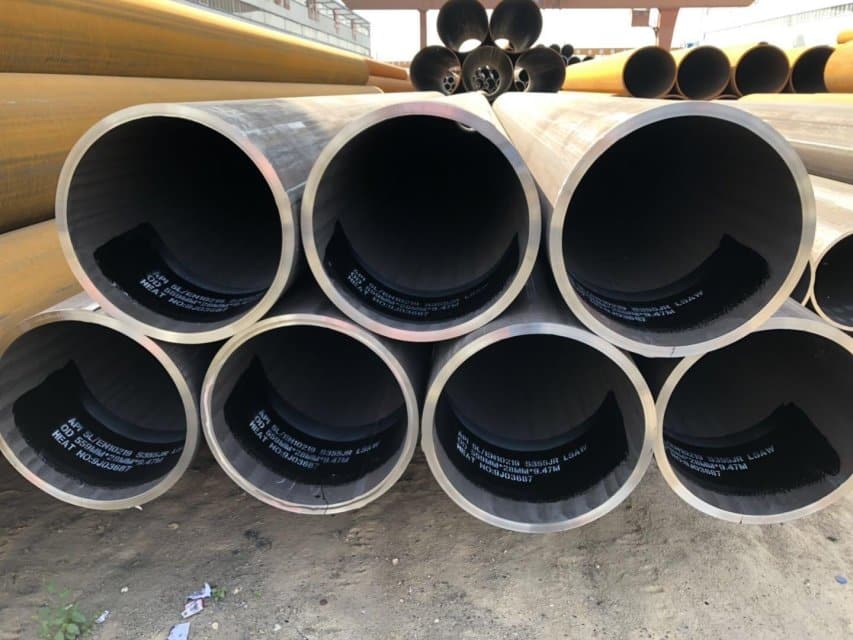- 1. Steel Grade Comparison: Core Differences in Mechanical Properties
- 2. Application Comparison: Precise Division of Scenario Adaptation
- 3. Typical Applications of EN 10219
- 4. Typical Applications of ASTM A500
- 5. Comparison of Manufacturing Processes and Testing Items
- 6. Frequency of Use in International Projects and Cases
- 7. Regional Distribution
- 8. Benchmark Cases
- 9. How to Choose the Right Standard for Your Project?
- 10. Why Choose LONGMA: A Professional Supplier of ERW/LSAW Round Pipes
In steel structure engineering, the selection of steel pipe standards directly affects the safety and economy of a project. The European standard EN 10219 and the American standard ASTM A500 are the two most widely used specifications globally, with significant differences in steel grades, applications, and processes. This article will comprehensively analyze their differences and help you make accurate selections by combining the technical advantages of LONGMA.
Steel Grade Comparison: Core Differences in Mechanical Properties
| Item | EN 10219 | ASTM A500 |
| Common Steel Grades | S235JRH, S275J2H, S355J2H, etc. | Grade A, B, C, D |
| Yield Strength (MPa) | 235–355 | 230–345 |
| Impact Performance Requirements | Yes (e.g., S355J2H requires -20°C impact test) | Generally no mandatory impact requirements (unless specifically required by design) |
| Elongation | High | Medium |
EN 10219 focuses more on structural safety and low-temperature adaptability, while ASTM A500 emphasizes economy and versatility.
Application Comparison: Precise Division of Scenario Adaptation
Typical Applications of EN 10219
- Bridge Engineering: The Rhine River Bridge in Cologne, Germany uses S355J2H round pipes to construct load-bearing beams, with qualified fatigue resistance.
- Mechanical Manufacturing: An automated production line in Italy uses S275JRH square pipes to make conveying frames, with dimensional accuracy ≤±0.5mm.
- Building Curtain Walls: A super high-rise building in Dubai uses S355NH rectangular pipes to build glass curtain wall supports, with excellent weather resistance.
Typical Applications of ASTM A500
- Building Structures: An apartment building in New York, USA uses Grade C square pipes as columns, with compressive strength meeting the load requirements of 10-story buildings.
- Municipal Engineering: The underground pipe network in Vancouver, Canada uses Grade B steel pipes to make inspection well frames, with strong anti-settling performance.
- Warehousing Equipment: A logistics center in Brazil uses Grade A rectangular pipes to build shelves, with a load capacity of 5 tons per layer.
Core conclusion: EN 10219 is suitable for cross-field complex structures, while ASTM A500 focuses on construction and municipal infrastructure projects.
Comparison of Manufacturing Processes and Testing Items
| Item | EN 10219 | ASTM A500 |
| Forming Method | Cold bending forming + welding (ERW/LSAW) | Cold bending forming + welding (ERW) |
| Heat Treatment Requirements | Optional normalizing or stress relief annealing | No heat treatment requirements |
| Non-Destructive Testing (NDT) | Requires UT or RT inspection for welds | No mandatory NDT requirements |
| Mechanical Property Testing | Strength, elongation, impact test | Strength, elongation |
From the perspective of quality control, EN 10219 implements stricter manufacturing and inspection specifications, making it particularly suitable for projects with high requirements for weld quality and material toughness.
Frequency of Use in International Projects and Cases
Regional Distribution
- Europe/Southeast Asia: EN 10219 accounts for over 65%, such as the expansion project of Penang Bridge in Malaysia using S355J2H steel pipes.
- North America/South America: ASTM A500 dominates the market, with Mexico City Metro Line 3 using Grade C square pipes as tunnel supports.
- China: Both standards are used in parallel. An industrial park in Xiong’an New Area uses both EN 10219 S355 and ASTM A500 Grade B.
Benchmark Cases
- EN 10219: For the expansion of Copenhagen Airport in Denmark, S355J2H rectangular pipes are used to construct the roof truss of the terminal, with wind load resistance reaching 0.6kPa.
- ASTM A500: A refinery in Houston, USA uses Grade C round pipes to make pipe supports, with a temperature resistance of up to 200°C.
How to Choose the Right Standard for Your Project?
| Scenario | Recommended Standard |
| Projects in Europe, the Middle East, or Southeast Asia | EN 10219 (compliant with EU regulations and CE certification) |
| Projects in North American markets such as the United States, Canada, and Mexico | ASTM A500 |
| Need for high strength and low-temperature impact performance | EN 10219 (e.g., S355J2H) |
| Structures sensitive to cost and without low-temperature requirements | ASTM A500 (Grade B/C) |
It is recommended to clarify the applicable standards according to the national regulations, design requirements, and owner preferences of the project location to avoid subsequent certification obstacles.
Why Choose LONGMA: A Professional Supplier of ERW/LSAW Round Pipes
Choosing the right standard is important, but it is more critical to select the right supplier. LONGMA is an enterprise based in Hebei, China, specializing in the production of round pipes conforming to EN 10219 and ASTM A500 standards, with the following advantages:
- Multi-specification production capacity: Supports ERW and LSAW round pipes from φ114mm to φ1420mm;
- Comprehensive quality assurance system: Holding ISO 9001, CE certification, EN 10219 certification, API 5L certification, etc., with products exported to Europe, America, and Southeast Asia;
- Full-process testing capability: Equipped with weld UT, dimensional inspection, impact testing, etc., meeting the acceptance requirements of high-standard projects;
- Rich experience in overseas exports: Providing S355J2H and Grade C round pipes to many international customers with a good reputation and stable supply;
- Strong customized service capability: Offering value-added services such as customer drawing deepening, third-party inspection, and certificate of origin, supporting port delivery or FOB/CIF trade terms.
In the final analysis, choosing between EN 10219 and ASTM A500 requires a comprehensive evaluation based on the project’s geographical location, structural strength requirements, cost control goals, and construction standard preferences. If you are unsure how to choose, please contact the LONGMA technical team to obtain standard recommendations and product quotations.


